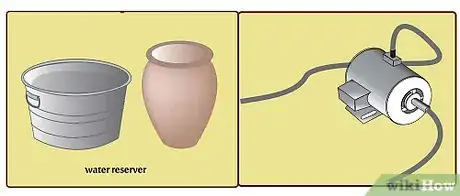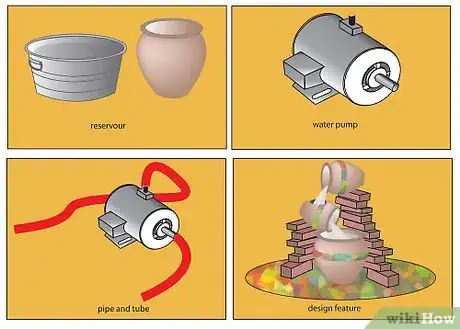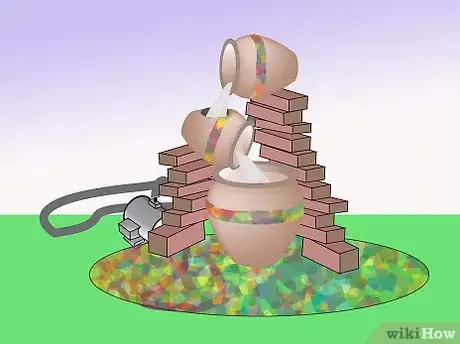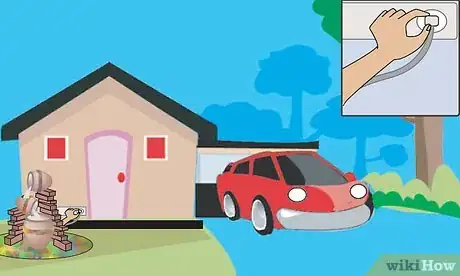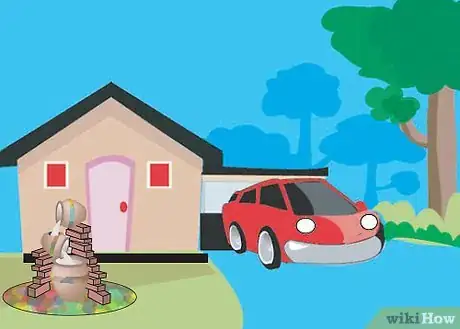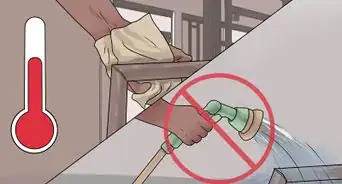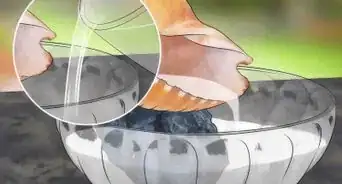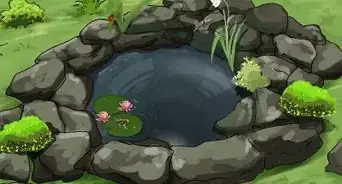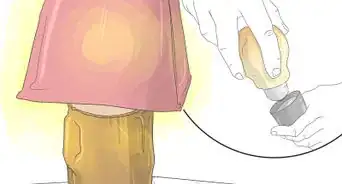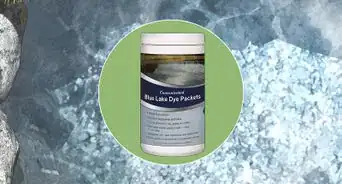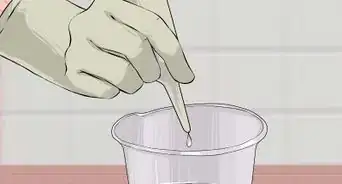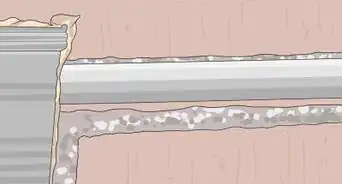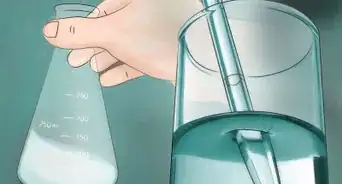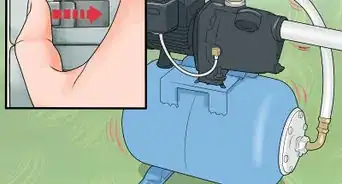X
wikiHow is a “wiki,” similar to Wikipedia, which means that many of our articles are co-written by multiple authors. To create this article, 23 people, some anonymous, worked to edit and improve it over time.
This article has been viewed 282,739 times.
Learn more...
Would you like to add the relaxing sound of running water to your home or garden without spending hundreds of dollars? This guide will teach you the basic steps to create a unique, custom-made fountain. These steps can be followed to create a fountain that fits your style, abilities and budget.
Steps
-
1Plan your fountain. Decide where you want to place your fountain, how large you want it to be and how you want it to look. These factors will all influence what materials you will need.[1]
- Your fountain will be composed of three main elements: a water reservoir, a water pump and a design feature.
- The location must have easy access to an electrical outlet or the ability to run an unobtrusive extension cord to power the pump
- The style is up to you. Go for something that works well with your existing landscaping and suits your personal taste.
-
2Gather your supplies.[2]
- A Reservoir. This can be any type of water-tight container, such as a plastic tub or even plastic sheeting lining your reservoir hole if building underground. If building above ground, consider making the reservoir part of the design, such as half a wine barrel, as long as it will hold water.
- A Water pump. Pumps can be purchased from most home improvement or landscape supply stores. You will need a pump with enough power (measured in gallons per second) to push the water up to the fountainhead. Since this will vary based on your design, it is best to consult with someone with knowledge of pumps before purchasing.
- Pipes and tubing. The pipes or tubing will deliver the water from the reservoir to the fountainhead. Many water pumps will come with tubing, but if not, or if you need something specific for your design (such as copper pipe), you will need to purchase it separately. Rubber tubing will be the easiest to work with.
- Design features. These elements will depend entirely on your design, such as river stones or a sculpted fountainhead. If your fountainhead of choice does not already have a hole, you may need to drill one.
Advertisement -
3Assemble your fountain parts.[3]
- If building below ground, dig a hole that will fit the water reservoir snugly. Be sure to leave 2 inches (5 cm) of drainage gravel beneath the reservoir. If you wish to hide the power cord, you will need to dig a separate trench out from the reservoir hole.
- Fit the pump in the reservoir before adding water. Ensure all tubing and power connections fit and function properly.
- Add your design elements. The water pump should remain accessible for adjustment, repair and cleaning, either by leaving an opening or door, or with easy disassembly.
- Fill the fountain with enough clean water to fully submerge the water pump and keep it submerged while in operation when water will be cycling through the upper part of the fountain.
-
4Adjust water flow. Turn on water pump (adjusting pressure if needed) and arrange the fountain's design elements to ensure the water returns to the reservoir. The look and sound of the fountain can also be adjusted this way by tweaking the angle of the fountainhead and any obstacles in the path of the water flow.
-
5Enjoy your fountain. Hide any rough spots or visible mechanisms with design features such as stones or plants.[4]
Advertisement
Community Q&A
-
QuestionIf I add fish, do I need a heater in the winter?
 Community AnswerYes, you would. Fish would definitely freeze in a "tank" or fountain that gets down to 30 degree or below.
Community AnswerYes, you would. Fish would definitely freeze in a "tank" or fountain that gets down to 30 degree or below.
Advertisement
Warnings
- If you need to use an extension cord, make sure it is rated for outdoor use and compatible with your pump.⧼thumbs_response⧽
- Do not let the water reservoir run dry. It can burn out the pump or potentially even spark a fire.⧼thumbs_response⧽
- Make sure that you run your fountain at least every few days. Otherwise, it could be an ideal breeding ground for mosquitoes.⧼thumbs_response⧽
- Always plug the pump into a GFI (ground fault interrupt) outlet. If you do not have one, install one or have a qualified electrician install one.⧼thumbs_response⧽
- If you must run an electrical cord across areas where a lawn mower will be used, bury the cord, or make certain that it is moved before anyone mows.⧼thumbs_response⧽
- Use only submersible fountain pumps that are rated for outdoor use.⧼thumbs_response⧽
Advertisement
Things You'll Need
- Waterproof container to serve as a reservoir.
- Water pump.
- Tubing or piping.
- Decorative items unique to your design.
- Water source if hooking up to an auto-fill.
References
- ↑ https://www.thisoldhouse.com/landscaping/21016638/how-to-build-a-fountain
- ↑ https://www.youtube.com/watch?v=MBaPGGUDCSA
- ↑ https://www.youtube.com/watch?v=XeA8g-9jHSo
- ↑ https://www.youtube.com/watch?v=G0_UdPk5oTc
- https://www.bobvila.com/slideshow/10-inventive-designs-for-a-diy-garden-fountain-49001
About This Article
Advertisement

